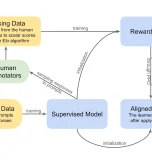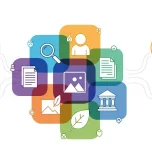Artificial intelligence can now do more than answer questions or generate generic text. Agentic AI is a system that can plan, use tools, remember context, and act toward specific goals. These systems represent the next leap. They aren’t chatbots playing guessing games; they’re orchestrators of real work.
For many teams, the challenge isn’t defining agentic AI – it’s choosing use cases that actually return value. The hype is full of moonshots, but most businesses need solutions that integrate with existing tools, run reliably, and produce measurable wins.
This article delivers exactly that. You’ll find five workflows you can deploy in weeks, not years. Each is measurable with clear KPIs, low risk when paired with human approvals, and adaptable whether you’re a small team or a global enterprise.
So, What Makes Agentic AI Ready for Production
Before we dive in, here are the essentials that turn a cool demo into a dependable system.
- Data readiness: Give the AI accurate, current, and relevant information. Garbage in, garbage out still applies.
- Secure tool integration: Connect via APIs with least-privilege permissions so the AI can act without overreaching.
- Guardrails: Add human-in-the-loop (HITL) review for irreversible actions to prevent costly mistakes.
- Observability: Log successes, failures, and user feedback so you can tune the system.
- Clear KPIs: Decide up front how you’ll measure success, such as reduced cycle time, higher accuracy, better satisfaction scores, etc.
Without these, even strong workflow ideas will stall.
Workflow #1: Customer Support Triage & Resolution
Support teams field the same questions repeatedly, which stretches response times and leads to inconsistent answers. Scaling that with headcount alone is expensive.
Agentic AI changes the shape of the work. Instead of guessing at a single reply, it can follow a plan: classify the ticket, retrieve the most relevant article or policy, draft a personalized response, check tone and compliance, and either send it or flag a human for review. It can also log dispositions, so future replies get smarter.
A well-known example is Klarna, which publicly reported that its AI assistant now handles most customer service chats, cutting average handling time from about eleven minutes to under two, and lowering repeat inquiries. The takeaway isn’t “replace people” – it’s “free your human agents to handle complex, high-value issues.”
Also, measuring what matters so wins are obvious: first-contact resolution (FCR), average handle time (AHT), deflection rate (the share resolved without a human), and CSAT. If those numbers trend the right way while escalations stay healthy, you’re shipping real value.
One caution to keep in mind is that your AI is only as good as your knowledge base. Outdated or conflicting articles will produce confident but wrong answers at scale. So put version control and a regular content review on the calendar before you turn up the volume.
Workflow #2: IT Incident Copilot (Reduce MTTR)
IT teams live with alert fatigue – a flood of pings from monitoring tools, many of them false positives. Even when an issue is real, time gets lost handing off between detection, diagnosis, and remediation. Mean time to recovery (MTTR) suffers, and so does uptime.
An agentic incident copilot can orchestrate the full loop. It can correlate related alerts, propose next steps from your runbooks, open or update the ticket with current context, post status in chat, and – after resolution – summarize the root cause and lessons learned.
Because it can plan and call the right APIs in sequence, it does more than suggest. It drives the process while keeping humans in control.
Teams adopting this pattern report meaningful MTTR reductions, especially when the copilot handles the rote work. These include enrichment, deduplication, and guided remediation for common failure modes. The human stays in the loop for approvals and for anything outside guardrails.
Track MTTR and mean time to detection (MTTD), plus reopen rate, to ensure you’re fixing issues the first time. If those things trend down while coverage and reliability go up, the copilot is paying for itself.
But there’s a big risk to keep in mind, and that’s over-permissioning. Limit access with least-privilege tokens and scoped tool roles so the agent can only touch systems required for the workflow. That keeps incidents contained, even when the AI makes an error – and earns trust with security teams from day one.
Workflow #3: Accounts Payable (AP) Invoice Processing
In many finance teams, AP still runs on swivel-chair work: read the invoice, retype key fields, match to the PO, chase exceptions, route approvals, post to the ERP. It’s predictable but slow, and every delay risks missed early-payment discounts or duplicate payments.
Agentic AI can turn that pipeline into a repeatable plan. It ingests invoices (PDFs or scans), extracts the right fields, matches them to vendor and PO records, flags mismatches, and routes approvals to the correct owner.
Once cleared, it posts the entry and attaches a tidy audit trail. Because the agent follows a defined sequence and calls each system via API, you get consistency and speed without sacrificing control.
This works well because AP is rules-driven. The logic (capture → match → exception → approve → post) rarely changes, yet it consumes human time. Let the agent do the rote steps while people focus on exceptions and vendor relationships.
Track cycle time from receipt to posting, exception rate, early-payment discount capture, and days payable outstanding (DPO). If cycle time drops and exceptions close faster without increasing error rates, you’re seeing real ROI.
Watch out for vendor identity issues. If your vendor master is messy, the agent will hesitate or, worse, route items incorrectly. Clean up with a “golden vendor” list, standardized naming, and a short dispute window so mismatches get resolved quickly.
Do that, and AP becomes a reliable showcase for agentic AI. You can enjoy faster closes, cleaner audits, and fewer end-of-month scrambles.
Workflow #4: Sales Development Assistant (Research → First Drafts)
Sales reps burn hours collecting firmographic data, scanning news, and writing outreach that feels personal. Sure, personalization helps, but it’s costly when every step is manual.
An agentic AI assistant can orchestrate the whole flow. It can gather relevant company and contact details, surface recent signals worth mentioning, draft one or two tailored openers, log the touch in your CRM, and schedule follow-ups – always with a human reviewing before sending.
Because it plans the sequence and remembers context, it avoids repeating itself or chasing stale angles. You can judge success by qualified meetings per rep, positive reply rate, and average prep time per account. If reps get to first touch faster and maintain response quality (or improve it), you’ve unlocked real leverage.
Avoid the creep factor. Keep inputs to public, business-relevant information and skip anything that feels invasive. When in doubt, ask: “Would I say this in person?”
Workflow #5: Content Operations with Human-in-the-Loop (Research → Outline → Draft)
Content teams struggle with speed and consistency. Research eats time, drafts vary in quality, and bottlenecks appear as deadlines pile up.
Agentic AI can be a production coordinator. It can synthesize source material, propose an outline aligned to your style guide, produce a first draft, and hand off to an editor for fact-checking and polishing. The loop is fast, but human judgment remains the gate.
A practical way to pilot this is with a lightweight assistant. Teams can trial tools like HelperX Bot to standardize research prompts and sanity-check drafts before publication – no heavy integration required.
You can track time to first draft, editor revision time, throughput per writer, and downstream engagement for published pieces. Add a firm two-step review (facts, then tone) to prevent confident-sounding errors from slipping through. Do that, and you’ll see more publish-ready content with fewer late-night rewrites.
Ship One in 2 Weeks
Why not? You don’t need all five workflows to see value. Just start with one, prove it, then expand.
Week 1: Choose the workflow with the clearest business need and a single success metric. Map the step-by-step plan the agent will follow and where human approvals fit. Connect only the tools required, with least-privilege permissions. Set up basic logging to see what’s working and what isn’t.
Week 2: Build a thin slice that handles the core path, not every edge case. Test with a small group of real users. Capture feedback, track your KPI, and fix any obvious gaps. If the results are positive, widen access; if not, adjust and retest before scaling up.
This approach keeps risk low and momentum high. A small, verified win makes the next workflow easier to approve and faster to deploy.
No Longer Fiction
Agentic AI isn’t just a research idea anymore – it’s a practical way to orchestrate real work. The trick is choosing repeatable tasks, feeding the system trustworthy data, and measuring outcomes you care about. Regardless of what you start with, the pattern is the same. Plan the steps, integrate the right tools, keep humans in the loop, and track the numbers.
Start small. Measure honestly. Scale what works. Do all those things, and you’ll move beyond experiments to an automation foundation that compounds value over time.







